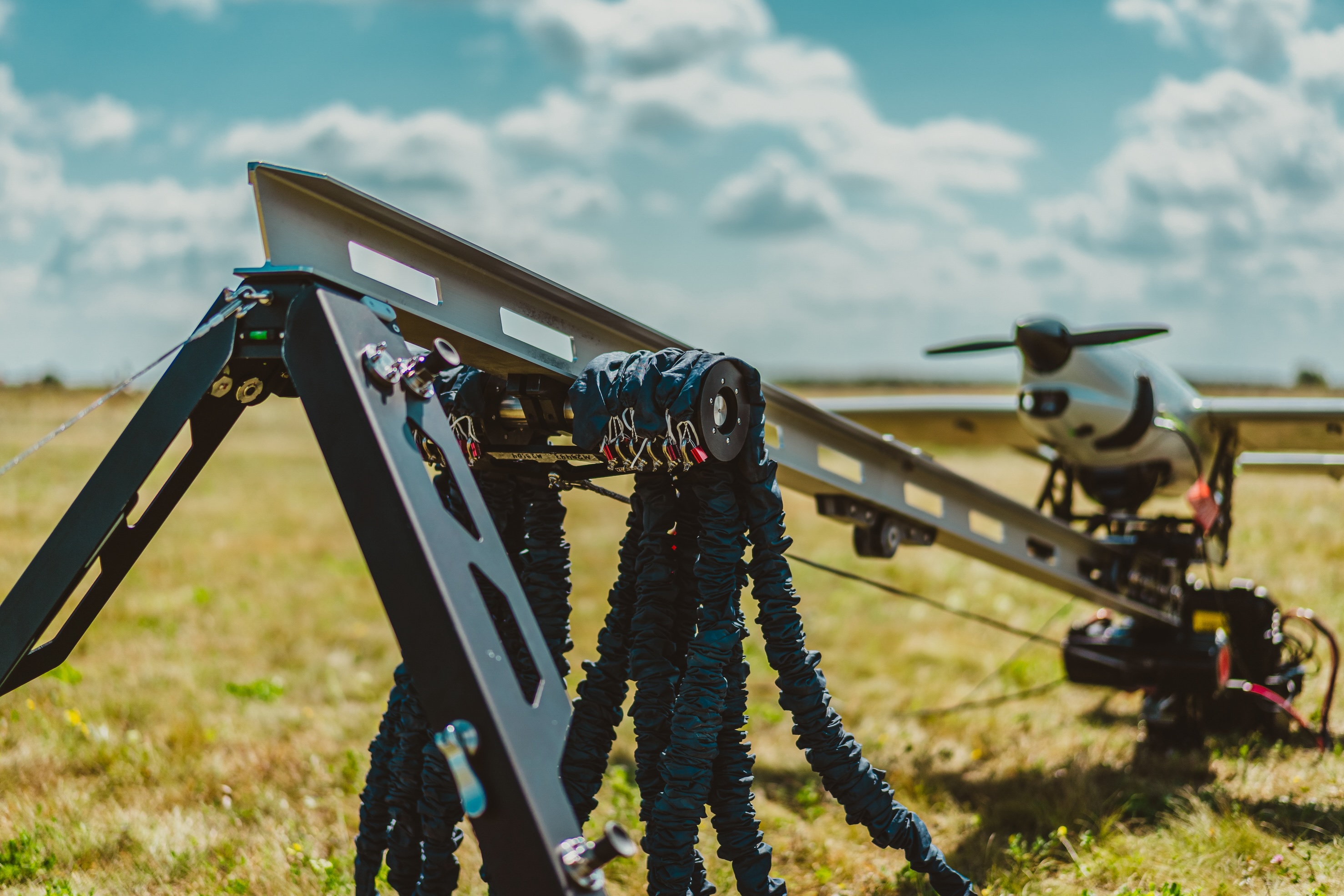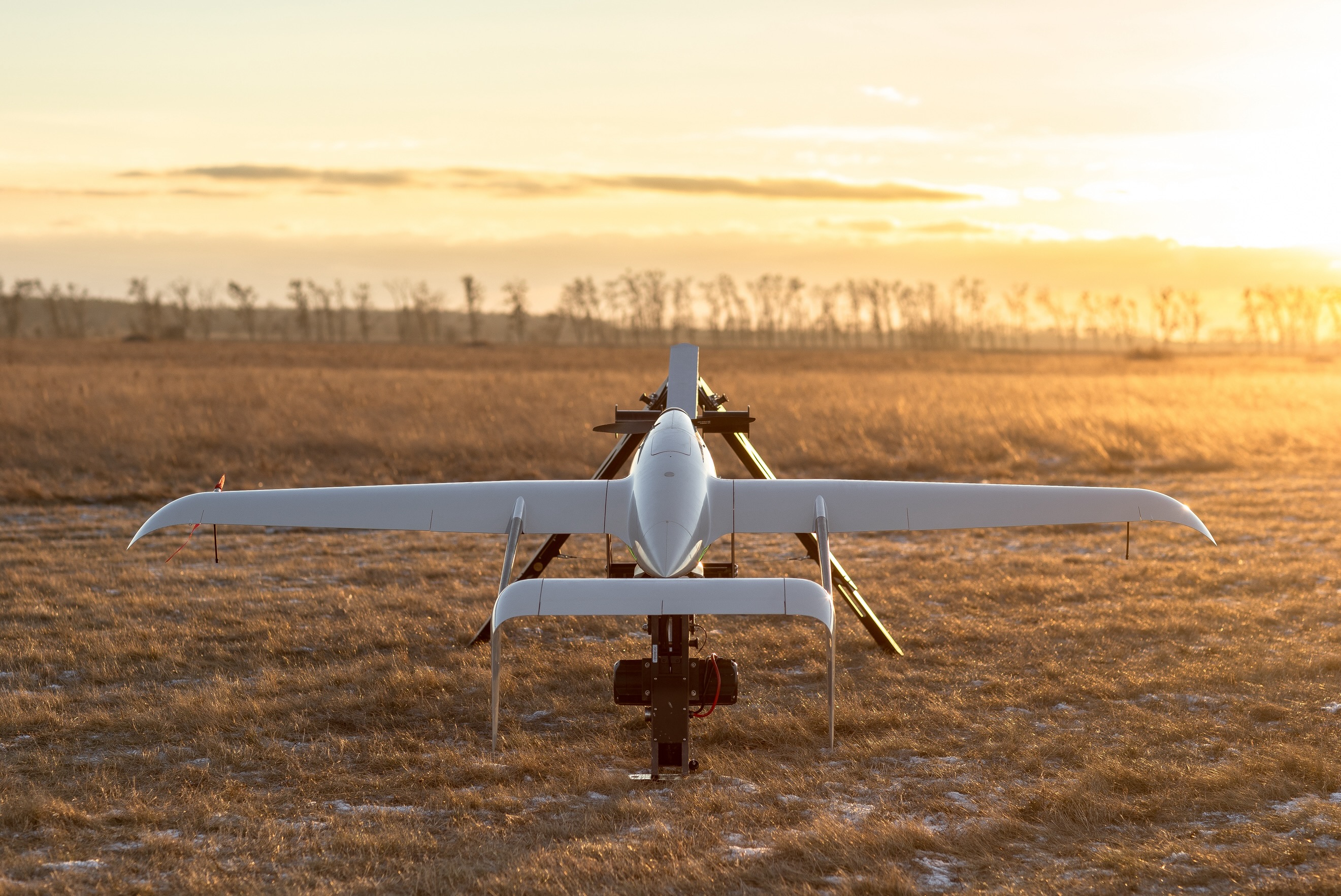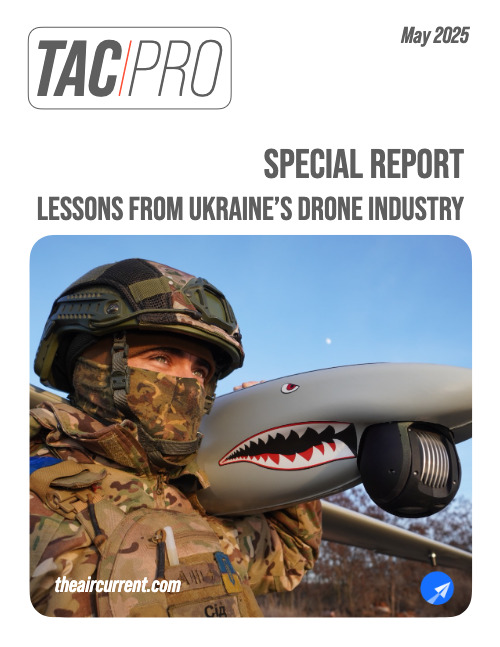This company profile is a part of The Air Current’s Special Report on the Ukrainian drone industry, which is available here.
Originally founded in 2006 to develop the K-10 Swift light sport aircraft, Skyeton turned its attention to unmanned aerial vehicles following the 2014 Russian aggression in Crimea and the Donbas. Its core product is a fixed-wing unmanned aerial vehicle called the Raybird, which it has been refining over the past decade.
“We spent five years, and then I would say that two or three more years after that, just sitting in the fields and testing, testing, testing, flying with different forces for different purposes, breaking it, repairing it again, breaking it again, and updating everything,” Skyeton CEO Roman Knyazhenko said of the Raybird’s development process. “You can create something very fast, you can create an aircraft in a year, and it will fly. But to make it come back after the flight, you need much more time to make it reliable and to make it functional.”
This exhaustive development process meant that by the time of Russia’s full-scale invasion in 2022, the Raybird was a relatively mature and refined product. And the company has chosen to keep its focus on this platform, rather than diversifying into different types of drones.

“If you are producing so many different types, it means that you’re not concentrating on your platform, and you are not paying attention to small details,” Knyazhenko explained. “And right now, the war and the equipment’s so sophisticated that even the smallest detail can make you better than your enemy a hundred times.”
At the beginning of the war, the Raybird was used primarily for intelligence, surveillance and reconnaissance (ISR) and artillery fire correction. Since then, Skyeton has layered different optional capabilities onto the aircraft, such as an onboard jamming system.
“My favorite comparison is the F-16 — it’s a beautiful aircraft that has served many years and still is serving … and it can perform so wide a range of tasks just because it’s different payloads,” said Knyazhenko. “That’s what we are doing. The platform is always the same, it can be a bit different electronics or adaptation for something, but in general, is the same platform that can do from reconnaissance to striking and 10 different types of missions between that.”
This approach also has advantages when it comes to training, he pointed out, as Raybird operators can easily adapt to new taskings. Just as in the case of the F-16, “you have small details that a pilot needs to know due to different types of missions, but in general, it’s the same machine,” he said. “We are saving time for training. We’re saving operators.”
Write to Elan Head at elan@theaircurrent.com
Subscribe to Continue Reading
Our award-winning aerospace reporting combines the highest standards of journalism with the level of technical detail and rigor expected by a sophisticated industry audience.
- Exclusive reporting and analysis on the strategy and technology of flying
- Full access to our archive of industry intelligence
- We respect your time; everything we publish earns your attention


